Boxing History
Fierce and flawed, Cuban Angel Robinson Garcia never turned down a fight
Published
1 month agoon
By
J. Humza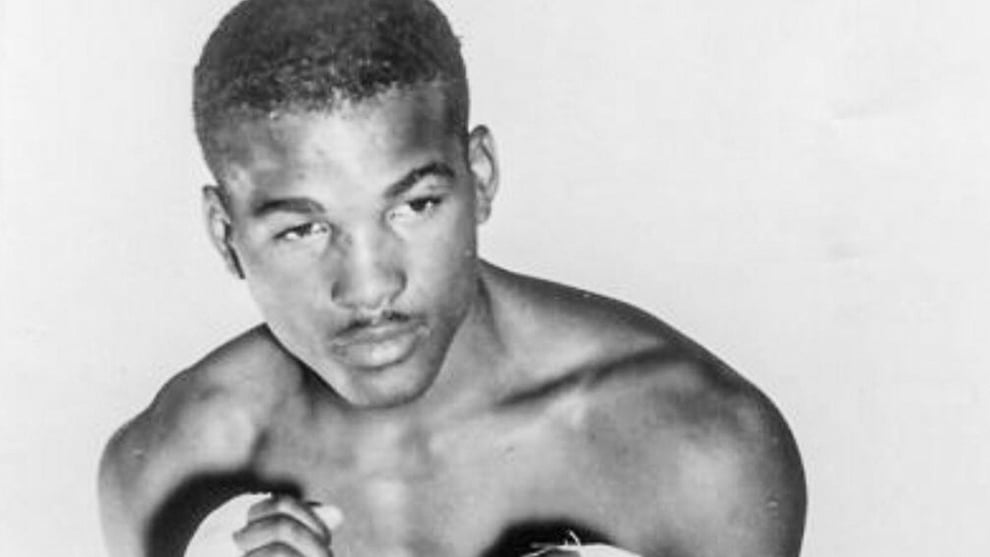
Born: May 9, 1937 in Havana, Cuba
He died: June 1, 2000 in Cuba
He became a professional: July 23, 1955
Department(s): from super featherweight to super welterweight
Record: 239 fights, 138 wins (55 by KO/TKO), 80 losses, 21 draws.
Defeated: Bobby Bell, Alfredo Urbina, Tommy Tibbs (twice), Jose Stable*, Rolando Morales, Pastor Marrero, Mario Vecchiatto, Valerio Nunez, Fernand Nollet, Giordano Campari, Ray Adigun, Francois Pavilla, Rafiu King*, Joe Tetteh (twice ), Andrew Navarro, Kid Tano, LC Morgan, Paul Armstead, Bobby Arthur, Jonathan Dele, Bunny Grant*, Mark Geraldo, Perry Abner.
Lost to: Frankie Ryff, Doug Vaillant (twice)*, Vicente Rivas*, Jose Stable*, Jose Napoles (twice)**, Carlos Hernandez (twice)**, Alfredo Urbina, Bunny Grant*, Rafiu King, Jean Josselin* , Eddie Perkins ** (three times), Antonio Ortiz*, Ismael Laguna **, Conny Rudhof, Olli Maki*, Andres Navarro (twice), Maurice Cullen, Bruno Acari **, Antonio Ortiz*, Carmelo Bossi**, Borge Krogh, Paul Armstead, Ken Buchanan **, Pedro Carrasco **, Chris Fernandez, Silvano Bertini*, Jose Hernandez* (twice), Jonathan Dele (twice), Jose Duran **, Roger Menetrey*, Roberto Duran **, Esteban De Jesus* *, Saoul Mamby **, Sugar Ray Seales, Johnny Gant*, Wilfredo Benitez **, Larry Bonds*, Adriano Marrero*, Josue Marquez *, Billy Backus**, Clyde Gray*, Willie Monroe, Ralph Palladin .
Scottish legend Ken Buchanan defeated Robinson Garcia
He drew with: Carlos Hernandez **, Doug Vaillant*, Carmelo Bossi **, Andres Navarro (twice), Francois Pavilla*, LC Morgan, Paul Armstead, Miguel Velazquez **, Jose Hernandez*, Antonio Ortiz *
**Denotes a past or future holder of a version of a world title
*Denotes a contender for the world title
The Story of Angel Robinson Garcia
Unlike many boxers, Angel Garcia did not come from a hard life situation. He was one of six children, and since his father was an officer in the Cuban army, his life was good while growing up.
Garcia started boxing as a teenager, and after winning all his amateur fights and collecting several trophies, he became a professional. As a huge fan of Sugar Ray, Robinson adopted Robinson as part of his ring name.
Angel was an excellent technical boxer with great skills and, as his 55 KO/TKO wins indicate, he was a good puncher. Despite these qualities, a fighter with eighty defeats is not a candidate for boxing greatness, but Garcia boasts a top traveling journeyman and the hardest chin in boxing.
By the time he started fighting out of Cuba in 1958, he had compiled a record of 29-2. Cuba banned professional boxing in 1962, forcing him to fight outside his homeland for the rest of his career. He fought anyone and everyone – and he fought often.
He had twelve fights in one six-month period and seventeen and twenty in the other two individual years. Sometimes the breaks between essential fights were ridiculous. In one month, in October 1960, he drew with Doug Vaillant and lost twice on points to future WBA/WBC welterweight titleholder Carlos Hernandez.
Another time he fought an eight-round fight on July 9, 1967 in Italy, and nine days later, again in Italy, he faced the future WBA/WBC champion in superweight Carmelo Bossi.
He lost on points to undefeated Sugar Ray Seales on February 13, 1974, and just five days later he fought and lost on points to Josue Marquez in San Juan. This came shortly after Marquez lost a split decision to Antonio Cervantes for the WBA super lightweight title. So two massive fights in five days.
During his career, Garcia fought in nineteen different countries: Algeria, Austria, Belgium, Canada, Denmark, Finland, France, Germany, Italy, Ivory Coast, Jamaica, Mexico, Puerto Rico, Spain, Switzerland, Tunisia, Great Britain, USA and Venezuela .
In the US, he fought in eight different states: Arizona, Florida, Maryland, Minnesota, Pennsylvania, Nevada, Up-to-date York and Texas. He faced fourteen fighters who had won or were about to win the world title, and seventeen who had challenged or were about to fight for a version of the title.

Jose Napoles: Robinson fought the legend twice
He faced Jose Napoles twice, Carlos Hernandez (who broke Davey Moore’s jaw), Eddie Perkins, Esteban De Jesus, Ken Buchanan, Ismael Laguna, Wilfredo Benitez and a juvenile Roberto Duran who was 26-0, 23 by KO/TKO ; Robinson has come a long way with all of them. After the fight with Garcia, Duran was reported to have said: “That Cuban bastard knows a lot about boxing and I want him to teach me some of what he knows.”
In 239 fights, he only failed to go the distance three times. His defeats to Carmelo Bossi and Boots Monroe were due to cuts, and only Alfredo Urbina, whom Garcia had defeated earlier, scored a true victory over Garcia in March 1961. Later that year, Urbina tied Sugar Ramos and overtook Jose Napoles in 1963. .
Garcia’s only title was the Latin American Junior Lightweight Championship, which went largely unnoticed when he appeared on the Havana show on February 26, 1958. The show was staged as part of the Grand Prix. The winner of the previous Grand Prix, Juan Fangio, was kidnapped by Fidel Castro’s movement on July 26, the day before the race.
The race continued and the car skidded and plowed into the crowd, killing seven people. There was also a boxing show attended by many celebrities, from Joe Louis to cowboy star Gene Autry.
In the fighting that night, two Cubans, Oscar Suarez and Jose Ramon Flores, suffered losses against Mexican opposition. Flores lost on points to Alvaro Gutierrez, but a more solemn problem was a cerebral hemorrhage. Fortunately, Flores survived and recovered.
A third Cuban, Orlando Echevarria, was knocked out in one round by Joe Brown. After all these incidents, Garcia’s stoppage of Panamanian Isidro Martinez in the ninth round went virtually unnoticed.
During his stays, Garcia gained a fan base in France and Spain and continued to fight the likes of Benitez, Billy Backus, Clyde Gray and Willie Monroe as he approached his forties before retiring following a 17-1 defeat of Belgian Pol Payen in Belgium in February 1978 at the age of 40.

With a superstar: Robinson fought Benitez (above)
Outside the ring, Garcia was not a cutthroat, but a real person with solemn flaws. He squandered all the money he earned. He was a serial philanderer, almost a sex addict, and it was alleged that he sometimes had sex before weigh-ins, after weigh-ins and after fights.
Robinson also struggled with alcohol and drugs and was often in trouble with the law. Early in his career, the Cuban Commission suspended him for living a “promiscuous” life. His affair with France ended when he abandoned his pregnant wife and spent two months in prison on pimping charges. The French Federation suspended him for seven years.
He was jailed after a brawl with several Sudanese sailors in Genoa, and militant Ferdie Pacheco said Garcia once told him he had spent six months in an Italian prison for beating a woman.
Those 2005 boxing rounds finally caught up with Garcia. After retiring, he returned to Paris. He had liver and kidney problems and was almost blind.
The road warrior slept homeless, helpless and destitute. French movie star Jean-Paul Belmondo is said to have recognized him and appealed to Fidel Castro, who allowed Garcia to return to Cuba and end his life there.
You may like
Boxing History
Cheerful Birthday Sugar Ray Leonard; Remembering His Greatest Fight
Published
8 mins agoon
July 3, 2024By
J. Humza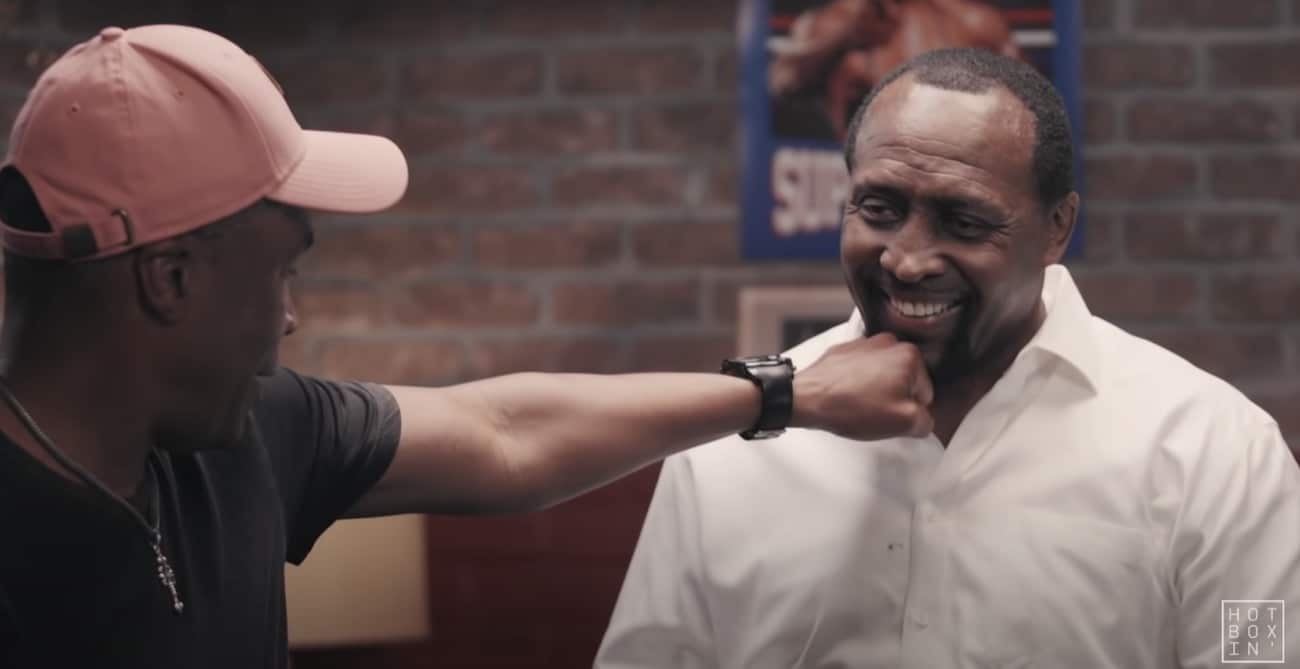
The great, incomparable Sugar Ray Robinson – for many the BEST Sugar in the boxing world forever and ever, amen – has died at the age of 67. Yet today, the one man who came closest to earning, earning and fully honoring the Sugar moniker, Sugar Ray Leonard celebrates his 67th birthday. And unlike the greatest who ever did, Ray Leonard fully enjoyed his retirement years, his abilities and his all-round health as prosperous as his bank account, all those years after risking oh so much in the ring, as all fighters do.
It has been written how the man born Ray Charles Leonard was “born to succeed”. I believe the quote is either from Ring magazine or KO magazine (RIP). Either way, Leonard proved in the ring that success, massive, celebrated success, came naturally to him. Not that Leonard didn’t have to work tough for his victories in the ring. He certainly did, and in many of his fights, Sugar Ray (Mark II, if you will) had to dig deep to achieve victory.

But what was Leonard’s biggest fight? What’s your favorite Sugar Ray Leonard fight? God knows, there are plenty to choose from.
Maybe like Mike Tyson, the boxing historian, you choose the first epic battle that Sugar Ray had with the great Roberto Duran? Maybe you choose the amazing, always-argued victory of Leonard over the Marvelous Marvin Hagler? Maybe you love the finishing that Sugar Ray put into his cerebral chess match or the battle with Wilfred Benitez, who is approaching his peak?
Or maybe you will choose the 1981 Super Fight, i.e. the clash between Leonard and Hearns?
This fight, in which two top welterweight champions risked it all, putting it all on the line in a unification bout, is being hailed by some as THE BEST welterweight fight of them all. It took place, as you of course know, in September of 1981, and no one – like no one – knew who would win or how as Leonard and “The Hitman” Thomas Hearns engaged in the biggest fight of the year.
Could Hearns, with his odd mix of height, reach and punching power, beat Leonard the way he beat Pipino Cuevas? Or could Leonard, with his combination of superior boxing skills, accuracy and better experience in substantial fights, be the top Hearns?
The fight lived up to expectations and after a titanic battle, Leonard, with a black eye and a body close to exhaustion, showed his majesty by turning around a fight he had been losing on all cards. It was a stunning victory for Sugar Ray over an even more exhausted Hearns; a 14th-round stoppage proving, for now, that Leonard is the best welterweight in the world.
The two of course met again. Finally. After eight long years. This time fighting at super middleweight, the veterans Leonard and Hearns fought to a thrilling and controversial draw. They were now, in Leonard’s own words, “one and one.” There was never a third fight.
Today, Leonard and Hearns are great friends, and their bond is special and completely incomprehensible to us mere mortals, who have never taken a former rival to a shadowy place just to embrace at the end of the battle.
You can bet that today; Tommy Hearns is one of the first people to call Ray Leonard and wish him a elated birthday! But Hearns won’t be the only one wishing Sugar Ray many elated returns.


Boxing History
Mike Tyson vs. George Foreman and Other Fights That Got Out of Hand
Published
2 hours agoon
July 2, 2024By
J. Humza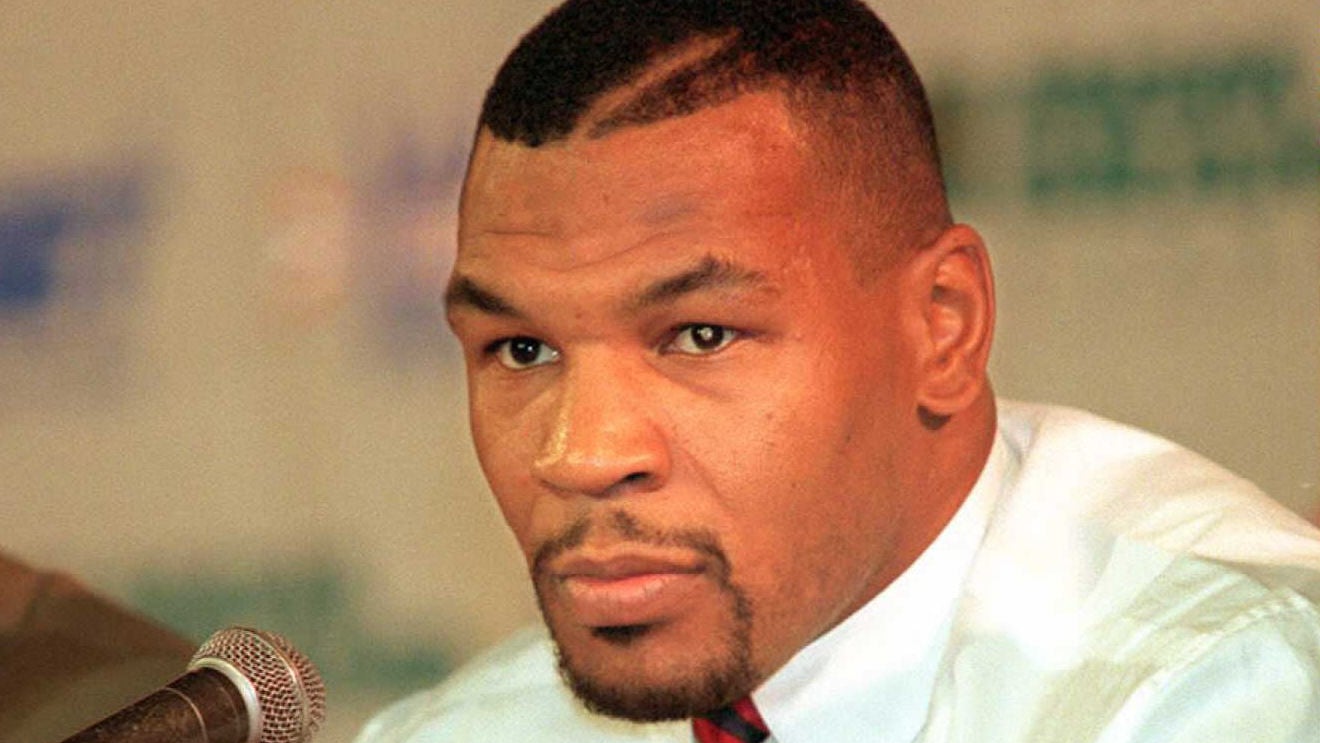
In 1998, Donald Trump was just Donald Trump, but he had plans for a fight that would change boxing. Well, that was his spiel at the time.
Trump actually had two fights in mind: a trilogy between Mike Tyson and Evander Holyfield and Tyson’s fight with George Foreman.
Tyson and Holyfield met outside his office at some point in the early summer of 1998. It was a shock to both, but clearly a move by Trump. But his real goal was to get Foreman, who last fought in slow 1997, into the ring with Tyson.
Tyson was having some troubles at the time; he had a kicking match with Don King outside an L.A. hotel, a $100 million lawsuit was going around, and he had to try to get his boxing license back. I remember in his last fight he took a bump or two to Holyfield’s ear. Tyson was suspended, Trump had a plan.
Donald Trump and Don King (DON EMMERT/AFP via Getty Images)
At the July hearing in Fresh Jersey, Tyson was doing well until he cursed. It all ended after that outburst, Trump was furious, Foreman stayed retired, and we all missed out on arguably one of the greatest and most absurd fights in boxing history.
This Saturday []we’re going to get a fight that we’ve lost so many times. The Tyson-Foreman fight was extreme, but there are so many other fun, amusing, great fights that we’ve lost over the years.
I’m talking about fights that were, often official, and then something went wrong and they never happened. They were lost forever; many people thought the Fury-Usyk fight was lost for good.
Some fights were agreed in principle, a handshake was made and maybe a few quid was paid to make it happen. There were others which were rumours but good rumours and not the newfangled version where one champion calls the other ap**** or ab**** and immediately thinks he can sell any seat in the Garden. They often had difficulty selling a deckchair in their own garden.
What about Tim Witherspoon’s saga with the Klitschko brothers? It seemed to last a decade. “They wanted too much from me,” Tim always said. “It’s just business,” the brothers always said. I’d like to see the last of the best ‘Spoon with Klitschko.
Naseem Hamed’s title fight with Azumah Nelson is another long shot; Zoom Zoom was the WBC super featherweight champion when Hamed was the WBO featherweight champion. What about Hamed and Arturo Gatti? I love that. At the end of Hamed’s wildly spectacular win over Kevin Kelley in Fresh York in December 1997, I spoke to Pat Lynch, Gatti’s man, and he confirmed that it had been mentioned. Gatti was four pounds heavier and held the IBF super featherweight title. Lynch, too, downplayed that: “Gatti would have slaughtered him,” he said slow that night at the Garden.

Arturo Gatti (Ed Mulholland/USA Today Sports)
There was also a substantial British fight that took place one night at the Empire Pool in Wembley, which fell apart when one of the boxers died in the ring. In June 1980 Johnny Owen and Charlie Magri fought on the same bill at the Empire Pool; Owen was the British bantamweight champion and Magri had never lost or defended his British flyweight title. They sat and chatted in the dressing room. They were a few pounds apart and there was no super flyweight division. They had also met as schoolboys and Magri won.
That night in June, they agreed to a fight. First, Owen had to go to Los Angeles and fight Lupe Pintor for the bantamweight title in September. Johnny never came back.
One of my favorites is John L. Gardner vs. Muhammad Ali in Hawaii in 1981. Ali said it would happen, it did, and Mickey Duff got a huge cash payment after meeting a man named Harold Smith in Los Angeles. Duff talked to Substantial John, Substantial John agreed, and dates were discussed, when Smith’s empire fell apart – he was arrested. Duff kept the money, but told the authorities in America; Substantial John never got a dime and never fought Muhammad Ali. That’s a true story. We’ve lost it forever.
In the summer of 1990 Barry Hearn prepared Mike McCallum for an outdoor fight in Brighton with Chris Eubank. I think initially there was talk of it being at Ancient Trafford. It never happened but it was more than a rumour.
One or two disappeared because one of the men went to prison instead of training camp. Perhaps the most infamous example came in December 1982, when Davey Moore agreed to terms and signed a contract to defend his WBA welterweight title against Tony Ayala Jr. At the time, Ayala Jr. was undefeated in 22 fights, 19 of which were by knockout. No one doubted he would become a boxing star.

Tony Ayala Jr
He was guaranteed $700,000 for Moore and Garden for a proposed fight in May 1983 that was supposed to sell out. They even held a press conference, and then, two weeks later, Ayala Jr. lost his mind. He sexually assaulted a woman and was arrested while shadowboxing half-naked in the street at 3 a.m. The fight was canceled for good; he served every day of a minimum sentence of 15 years. Instead, Moore fought Roberto Duran in June and lost. Ayala Jr. never became the fifth king.
The fights we lost along the way have a bit of everything. It’s just a shame so many got away. Still, it’s Saturday in Riyadh and it looked like we lost.
Boxing History
Remembering the Wildness of Edwin Valero
Published
8 hours agoon
July 2, 2024By
J. Humza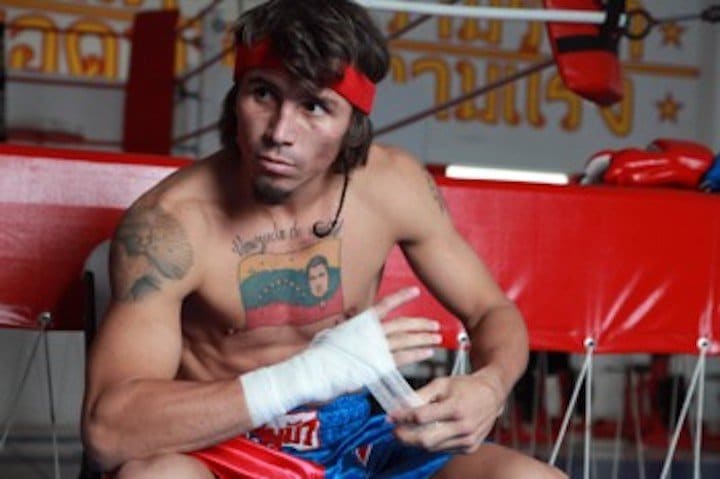
Born in Merida, Venezuela in December 1981, Edwin Valero became a favorite among fight fans thanks to his simply incredible series of knockouts. Valero is still talked about, remembered, and fans still discuss what could have been.
Valero began boxing at the age of 12, a fatherless street kid who got a job at a local gym. Reports vary, but some say Valero compiled an amateur record of 86-6(45). Seemingly born to fight, Valero was involved in street fights, and his sheer rage even then drove him to violence. In July 2002, Valero turned pro and defeated Eduardo Hernandez, stopping him in two minutes of the first round. Valero, a deadly and powerful southpaw, had an incredible 18 first-round KO victories.

It was only Valero’s 19th professional fight that extended beyond the first round; it was only in the second round. Valero could punch, everyone knew that. But could he become a world champion? The answer came in Valero’s 20th fight, when he faced and defeated Vicente Mosquera for the WBA super featherweight title. Valero needed ten rounds, easily his longest fight. But his KO rate remained at 100 percent, and Valero was soon being talked about as a potential future opponent for Manny Pacquiao. Instead, Valero had just seven more fights to go.
Valero was badly injured in a motorcycle accident in 2001, more than a year before his professional debut. Valero suffered a brain hemorrhage and a fractured skull. It took some time, months in fact, before Valero was cleared to turn pro. Valero was unable to fight in America (apart from a few fights) due to an MRI done in January 2004, which showed a compact blood clot in his brain. Years later, when the cruelty Valero was capable of became widely known, the question arose whether Valero had suffered irreversible brain damage as a result of the accident and whether this affected his mood and temperament?
We will never know.
But Valero, after holding onto his 130-pound belt four times, then moving up to win the WBC lightweight title, holding it twice—all by KO—attacked and killed his wife. Valero, it turned out, scared his wife, stabbed her three times, killing her. Valero then hanged himself in his cell. That happened in April 2010, less than eight years after “El Inca” first boxed as a pro.
Most people would say to hell with Valero, let him rot in hell. And who could argue? But Valero, for all his faults, for all his simply shameful and unforgivable flaws as a human being, was for a compact time a force of nature in the boxing ring. Some say that Valero, who never went the distance in a single fight, was unbeatable, his raw, ferocious power ensuring victory no matter who he fought.
We will never know.
Valero is remembered as a ghastly man, a disturbed killer who deserves no sympathy. However, Valero is also remembered as one of the most invigorating fighters of the first decade of the 21st century. And there is a substantial “what if?” next to his name. 27-0(27) and a two-time world champion, the memory of Valero and his exploits still haunts many.



Cheerful Birthday Sugar Ray Leonard; Remembering His Greatest Fight

William Zepeda vs. Giovanni Cabrera July 6, live on DAZN

ANTHONY JOSHUA VS OLEKSANDR USYK PREDICTION & full breakdown by PETER FURY
Trending
-

 Interviews2 months ago
Interviews2 months agoI fell in love with boxing again
-
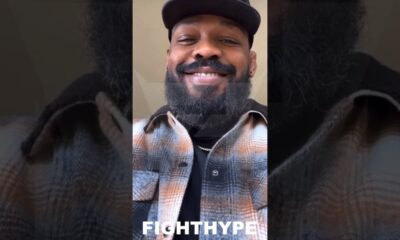
 Video2 months ago
Video2 months agoJON JONES LAUGHS AT TYSON FURY & RESPONDS TO “BEAT ME UP” CALLOUT
-
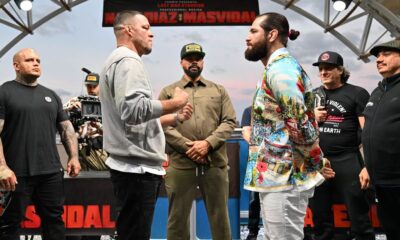
 Analysis2 months ago
Analysis2 months agoNate Diaz: Rematch with Jorge Masvidal will be ‘much more arduous’ than with Jake Paul
-
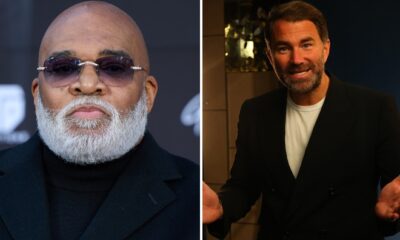
 UK Boxing2 months ago
UK Boxing2 months agoLeonard Ellerbe ends Eddie Hearn’s feud: I have to agree with him
-
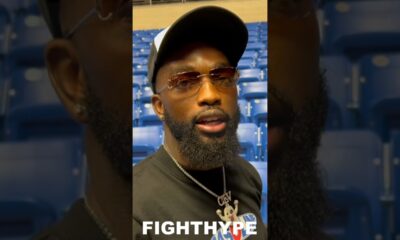
 Video2 months ago
Video2 months agoFRANK MARTIN NEW MESSAGE TO GERVONTA DAVIS; WARNS HE’LL FRUSTRATE & BOX HIS HEAD OFF
-
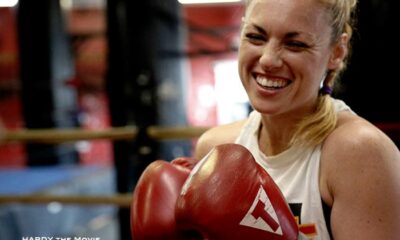
 MMA2 months ago
MMA2 months agoTrue to her name, Heather Hardy is rebuilding
-
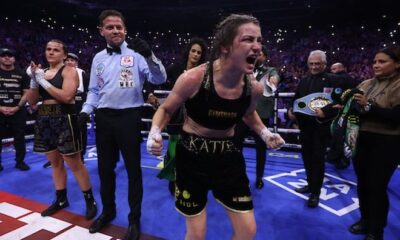
 Results2 months ago
Results2 months agoChantelle Cameron vs. Katie Taylor 2
-

 MMA2 months ago
MMA2 months agoThe Irish showed up in droves at the Mayweather-McGregor weigh-in




